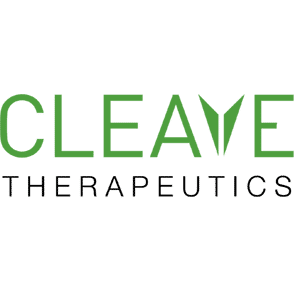预约演示
更新于:2025-05-07
RUVBL2 x RUVBL1
更新于:2025-05-07
关联
2
项与 RUVBL2 x RUVBL1 相关的药物作用机制 RUVBL1 抑制剂 [+1] |
在研适应症 |
非在研适应症- |
最高研发阶段临床前 |
首次获批国家/地区- |
首次获批日期1800-01-20 |
作用机制 RUVBL1 抑制剂 [+1] |
在研适应症 |
非在研适应症- |
最高研发阶段临床前 |
首次获批国家/地区- |
首次获批日期1800-01-20 |
100 项与 RUVBL2 x RUVBL1 相关的临床结果
登录后查看更多信息
100 项与 RUVBL2 x RUVBL1 相关的转化医学
登录后查看更多信息
0 项与 RUVBL2 x RUVBL1 相关的专利(医药)
登录后查看更多信息
157
项与 RUVBL2 x RUVBL1 相关的文献(医药)2025-04-01·Cancer Genetics
In silico protein structural analysis of PRMT5 and RUVBL1 mutations arising in human cancers
Article
作者: Al-Marrawi, Majd ; Bouley, Renee A ; Petreaca, Ruben C
2025-04-01·Structure
The structure of the R2T complex reveals a different architecture from the related HSP90 cochaperone R2TP
Article
作者: Boskovic, Jasminka ; Úrbez, Cristina ; López-Perrote, Andrés ; Alabadí, David ; Llorca, Oscar ; Fonseca, Sandra ; Rubio, Vicente ; Palacios-Abella, Alberto
2025-02-01·Life Science Alliance
RuvBL1/2 reduce toxic dipeptide repeat protein burden in multiple models of C9orf72-ALS/FTD
Article
作者: Dauletalina, Dana ; Azzouz, Mimoun ; West, Ryan JH ; Ferraiuolo, Laura ; Castelli, Lydia M ; Kyrgiou-Balli, Ergita ; King, Marianne ; Webster, Christopher P ; Crossley, Olivia M ; Hautbergue, Guillaume M ; Coldicott, Ian ; Yang, Zih-Liang ; De Vos, Kurt J ; Higginbottom, Adrian ; Shaw, Pamela J ; Lin, Ya-Hui ; Hall, Bradley
1
项与 RUVBL2 x RUVBL1 相关的新闻(医药)2024-02-13
·生物探索
引言组蛋白变体H2A.Z在启动子上发现并调节转录。ATP依赖性染色质重塑器SRCAP复合体(SRCAP-C)促进标准组蛋白H2A.Z-H2B二聚体被H2A–H2B取代。2024年2月8日,复旦大学徐彦辉及Wang Li共同通讯在Cell Discovery(IF 33.5)在线发表题为“Structural insights into histone exchange by human SRCAP complex”的研究论文,该研究确定了人类SRCAP-C与含H2A的核小体结合的结构。在真核细胞中,基因组DNA包裹在组蛋白八聚体周围,在基因组上产生排列的核小体。典型核小体包含四个组蛋白H2A、H2B、H3和H4的两个拷贝。为了实现功能调节,ATP依赖性染色质重塑复合体(重塑复合体)改变核小体的组成和沿DNA的位置。染色质重塑复合物根据其催化ATP酶的异同可分为4个家族:模仿开关(ISWI)、染色质结构域解旋酶DNA结合(CHD)、开关/sucrose不可发酵(SWI/ SNF)和肌醇营养不良80 (INO80)。其中两种重塑蛋白由单个亚基(CHD家族)或几个亚基(ISWI家族)组成。相比之下,SWI/SNF和INO80家族是多亚基复合物,除了超家族II解旋酶样运动亚基外,还含有肌动蛋白和肌动蛋白相关蛋白(ARPs)以及其他具有不同功能的重塑蛋白特异性亚基。人类染色质重塑子SNF2相关CPB激活蛋白(SRCAP)复合物(SRCAP-C)及其酵母对应物SWR1复合物(SWR-C)属于INO80染色质重塑子家族。SRCAP-C和SWR-C可以用H2A.Z-H2B二聚体以ATP依赖的方式取代H2A-H2B二聚体,这一过程可能需要组蛋白伴侣。生成的H2A.Z含核小体富集于几乎所有常染色质基因的启动子区域,并参与转录和其他过程的调控,如DNA复制、DNA修复和染色体分离。在真核细胞中,H2A.Z主要存在于它位于启动子的远端,在RNAPII的起始和延伸中起关键作用。H2A.Z在复制起点也广泛富集,并通过调节早期复制起点的起始和复制时间与DNA复制直接相关。此外,研究表明,协调H2A.Z双链断裂(DSBs)中的动力学对DNA修复至关重要。H2A.Z在染色体分离过程中也起着至关重要的作用,以维持基因组处于稳定状态。与其他染色质重塑子不同,SWR-C与核小体结合并诱导DNA展开和重新包裹,但不产生净DNA易位,表现出一种典型特征。核小体结合的SRCAP-C的整体结构(Credit: Cell Discovery)人SRCAP-C是一种~1-MDa复合物,由SRCAP、YL1、RUVBL1、RUVBL2、ARP6、ZNHIT1、DMAP1、ACTL6A、ACTB和YEATS4等10个亚基组成,酵母SRCAP-C由10个相同的亚基组成,分别为Swr1、Swc2、RvB1、RvB2、ARP6、Swc6、Swc4、Arp4、Actin、Yaf9和另外4个酵母特异性亚基Swc3、Swc5、Swc7和Bdf1。先前的研究已经揭示了酵母SWR-C、人SRCAP-C和核小体结合酵母SWR-C在ATP类似物ADP-BeFx存在下的结构。SWR-C含有RuvBL蛋白的异六聚体,Swr1中的插入物通过RuvBL六聚体延伸。Swr1的ATP酶结构域在超螺旋位置(SHL) 2上抓住DNA,导致DNA在ADP-BeFx结合状态下移位1bp。此外,进入DNA部分被解开,组蛋白核心“弯曲”。与酵母SWR-C相比,SRCAP-C采用了大致相似的结构,包含一个带有两个独立臂的环状“头”。该研究测定了核小体结合的SRCAP-C在不同核苷酸结合状态下的结构,并进行了结构引导染色质免疫沉淀测序(ChIP-seq)分析,以测试ZNHIT1对H2A.Z在体内掺入的影响。SRCAP-C介导的Z交换。SRCAP亚基集成了一个6亚基肌动蛋白相关蛋白(ARP)模块和一个含ATP酶的马达模块。ATP酶相关的ARP模块沿DNA包围核小体的一半,并可能抑制净DNA易位,这是SRCAP-C的独特特征。motor模块在载脂蛋白(无核苷酸)、ADP结合和ADP-BeFx结合状态下采用不同的核小体结合模式,表明ATP酶驱动的运动通过解开进入DNA的包裹使H2A-H2B不稳定,并通过ZNHIT1亚基将H2A-H2B拉出核小体。结构导向的染色质免疫沉淀测序分析证实了H2A接触ZNHIT1维持H2A.Z基因组上占用率的必要性。该研究为SRCAP-C介导的H2A-H2A.Z交换机制提供了结构性的见解。原文链接https://www.nature.com/articles/s41421-023-00640-1责编|探索君排版|探索君文章来源|“iNature”End往期精选围观一文读透细胞死亡(Cell Death) | 24年Cell重磅综述(长文收藏版)热文Science最新发布:全世界最前沿的125个科学问题热文Nature | 2024年值得关注的七项技术热文Nature | 自身免疫性疾病能被治愈吗?科学家们终于看到了希望热文Nature | 癌症与神经系统的致命舞蹈
细胞疗法
分析
对领域进行一次全面的分析。
登录
或

生物医药百科问答
全新生物医药AI Agent 覆盖科研全链路,让突破性发现快人一步
立即开始免费试用!
智慧芽新药情报库是智慧芽专为生命科学人士构建的基于AI的创新药情报平台,助您全方位提升您的研发与决策效率。
立即开始数据试用!
智慧芽新药库数据也通过智慧芽数据服务平台,以API或者数据包形式对外开放,助您更加充分利用智慧芽新药情报信息。
生物序列数据库
生物药研发创新
免费使用
化学结构数据库
小分子化药研发创新
免费使用

